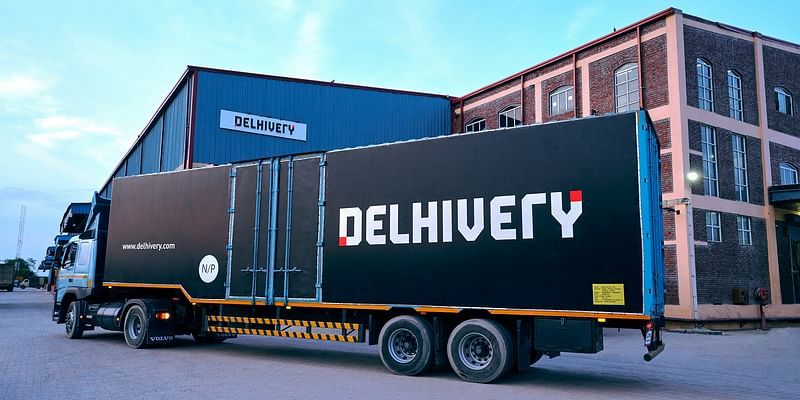According to Indian logistics startup Delhivery, it has fulfilled over one billion orders. With over 20 automated sort centres, more than 67 fulfilment centres, and delivering over 1.5 million packages a day, the unicorn has been bringing the technology heft to India’s logistics market.
But the market still has a ways to go. Although the Indian logistics sector reached $215 billion in 2020, growing at a CAGR of 10.5 percent, only about 15 percent represented the organised segment.
To empower more sellers to leverage tech and build their brands, Rajaganesh S, Head - Supply Chain Solutions, Delhivery hosted a masterclass on Rethinking fulfilment: A perspective on powering omnichannel, speed, and experience, at YourStory’s Brands of India launch event.
“The end consumer looks at three things primarily: the best price possible for a product, speed of delivery, and a hassle-free experience. A seller that can tick all these boxes can earn the customers’ trust and build brand loyalty. Rethinking fulfilment has a major role to play here,” he said.
Rajaganesh went on to explain that typically, sellers and brands look to scale fast, be frugal/optimise spending, build customer loyalty, and focus on their core competencies.
Therefore, it is critical for them to ace their discovery, purchase, order fulfilment, and product return strategies. And there exist certain hurdles in these steps that must be addressed by the brands.

Rajaganesh S, Head, Supply Chain Solutions, Delhivery
The challenges at hand
It is common knowledge that sellers cannot offer a guaranteed turnaround time (TAT) on orders placed on their own webstores. Delivery timelines may vary based on the customer’s location, geographical conditions, and other factors.
“Even if the customer likes the product, they may not be convinced by the shipping model. However, on Amazon or other marketplaces, they are promised quick deliveries. So, this adds difficulty for a brand to build customer loyalty towards its webstore,” Rajaganesh said.
Inventory duplication takes place when brands sell across channels. Further, longer lead times and high transport costs become an issue when orders are fulfilled as separate shipments - usually the case when a brand is responsible for shipping.
Further, as India is a largely cash on delivery market, the high rate of returns have plagued online sellers for the last few years.
“Having different courier and logistics partners means that a brand has to invest effort in managing them all. Even if only the best logistics partners are handpicked, there is still significant effort involved in choosing which partners have good track records in particular geographies,” he explained.
So how can these current challenges be addressed for sellers to deliver a seamless experience for customers?

An integrated retail strategy
According to Rajaganesh, brands should utilise multi channel fulfilment platforms, work on the speed and precision of deliveries, and focus on optimising the cost of shipping.
“First, brands need to start using an order management system to map products listed across channels. This system would provide real time updates and allow brands to use a common inventory to fulfill orders across channels,” he explained.
By fulfilling orders from the same inventory, a number of challenges can be solved. For instance, a brand’s offline store can fulfil an order placed online if the physical store is closer to the customer’s location. For this, a singular inventory is a must-have.
Further, this would prevent a situation where marketplaces heavily discounting a brand’s products cause a major price disparity between its offline and online rates.
“It follows from the singular inventory model that brands should also integrate the fulfilment services they use. When warehousing and shipping is taken care of by a single partner, using a common inventory system, there is a tight integration which consequently allows brands to offer more predictable turnaround times,” Rajaganesh said.
Besides this, brands should also consider optimal inventory placement across locations in India. They should collect data on which SKUs move quicker at certain locations, and accordingly have their fulfillment partner stock warehouses.
“Orders can thus be allocated quickly based on the warehouse nearest to the customer. Then, brands need to think of how quickly they can receive a returned product, check it for authenticity and quality, and put it back into inventory. A delay of two to three days could result in lost sales,” he said.
One way to address this, he added, is to educate and empower the pickup staff to perform a quality inspection at the pickup point and the information can be relayed instantly to the brand.
And if brands can standardise the boxes used for shipment, billing can become more straightforward and lengthy reconciliation processes can be avoided.
“There are many combinations of models possible in shipment, and brands should look to choose the fit that is right for them. If they can optimise their warehouse operations, multichannel platform operations and shipping, they stand to cover the most ground,” he said.
Brands of India is a YourStory initiative to catalyse the growth of India's D2C economy. The initiative will bring together D2C ecosystem stakeholders, including brand builders, D2C startups, investors, corporates, and policymakers, to discover, build and help daring entrepreneurs create an additional 500 Brands of India in the next three years.
To know more about this initiative and the D2C ecosystem, visit brandsofindia.yourstory.com.

Edited by Teja Lele Desai
Link : https://yourstory.com/2021/09/brands-of-india-masterclass-d2c-brands-fulfilment-delhivery
Author :- Rishabh Mansur ( )
September 19, 2021 at 07:00AM
YourStory


